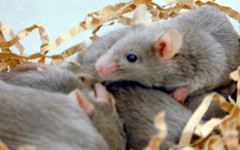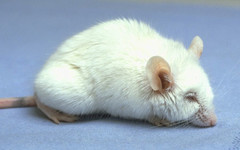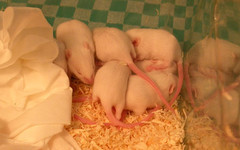Health and activity
A healthy mouse
The laboratory mouse’s closest genetic relative is the wild mouse: Mus musculus. Knowledge of the behaviour of the wild species provides information, which is helpful in assessing the well-being of a laboratory mouse.
The way in which a laboratory mouse can engage in its natural behavioural repertoire (e.g. nesting behaviour, see the movie "Nesting behaviour and huddling''), determines in no small measure its state of well-being. Multiple strains of laboratory mice are available, both inbred and outbred stock. Genetic modification technology has greatly expanded the number of available lines. Consequently, there is a great diversity in behavioral characteristics and a broad range of physiological normal values.
Mice have a short lifespan with an associated high metabolic rate and rapid maturation and reproduction. In general, they have large litters. A healthy laboratory mouse is alert, curious, engages in social interactions, looks well-nourished and clean, and is vivacious.
Activity
The behavioral pattern of a laboratory mouse is determined in large measure by the opportunities afforded by the environment. Housing of laboratory mice should ideally be predicated on creating conditions that offer the broadest possible range of natural activities such as exploration, resting, climbing, grooming, foraging, nesting, and social behaviour. To this end, the Council of Europe has set forth a number of guidelines. They are a compromise between the needs of the animal and what is feasible in a laboratory setting.




